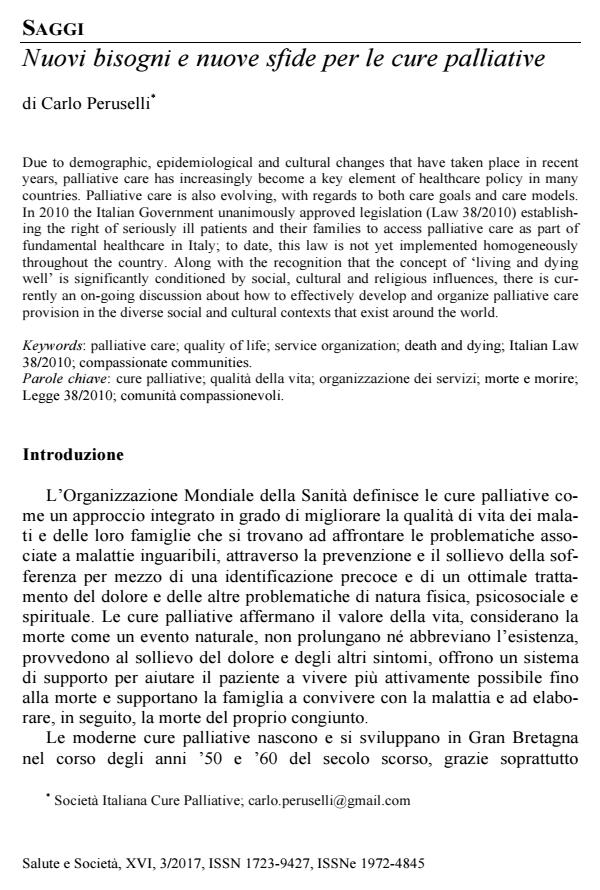Nuovi bisogni e nuove sfide per le cure palliative
Journal title SALUTE E SOCIETÀ
Author/s Carlo Peruselli
Publishing Year 2017 Issue 2017/3
Language Italian Pages 8 P. 13-20 File size 52 KB
DOI 10.3280/SES2017-003002
DOI is like a bar code for intellectual property: to have more infomation
click here
Below, you can see the article first page
If you want to buy this article in PDF format, you can do it, following the instructions to buy download credits

FrancoAngeli is member of Publishers International Linking Association, Inc (PILA), a not-for-profit association which run the CrossRef service enabling links to and from online scholarly content.
Due to demographic, epidemiological and cultural changes that have taken place in recent years, palliative care has increasingly become a key element of healthcare policy in many countries. Palliative care is also evolving, with regards to both care goals and care models. In 2010 the Italian Government unanimously approved legislation (Law 38/2010) establishing the right of seriously ill patients and their families to access palliative care as part of fundamental healthcare in Italy; to date, this law is not yet implemented homogeneously throughout the country. Along with the recognition that the concept of ‘living and dying well’ is significantly conditioned by social, cultural and religious influences, there is currently an on-going discussion about how to effectively develop and organize palliative care provision in the diverse social and cultural contexts that exist around the world.
Keywords: Palliative care; quality of life; service organization; death and dying; Italian Law 38/2010; compassionate communities.
- Organisation and management of multi-professional care for cancer patients at end-of-life: state-of-the-art from a survey to community and hospital-based professionals Sara Zuccarino, Angela Gioia, Filippo Quattrone, Sabina Nuti, Michele Emdin, Francesca Ferrè, in Research in Health Services & Regions 15/2024
DOI: 10.1007/s43999-024-00051-z
Carlo Peruselli, Nuovi bisogni e nuove sfide per le cure palliative in "SALUTE E SOCIETÀ" 3/2017, pp 13-20, DOI: 10.3280/SES2017-003002